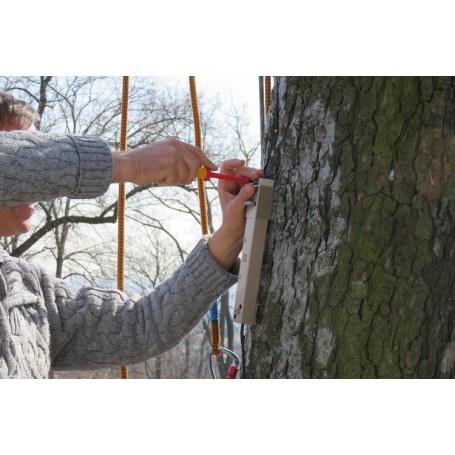Pulling Test | Fakopp
Currently, the widely accepted approach for assessing the safety and stability of tree roots involves applying a bending load to the trunk through a cable connected to the tree. This method is utilized to evaluate both the uprooting stability of the tree and the potential risk of trunk breakage.
USAGE INSTRUCTIONS
Ensure strict adherence to all safety instructions throughout the test! Attach the cable to the trunk in the crown of the tree, positioning it as high as possible. Select an anchor point approximately 10 to 15 meters from the tree in the appropriate direction. Arrange the winch and ropes in accordance with the provided guidelines. Install the load cell, inclinometer sensors, and extensiometer sensors. Connect all sensors to the central unit. Power on the units, press "Tara" on the load cell, initiate the Pulling Test software, and commence the measurement by gradually and evenly loading the cable using the winch.
Cable and winch
- Cable length: 20 m
- Winch: 1.6 or 3.2 metric ton
Load cell
- Calibrated: yes
- Cable-mounted: yes
- Capacity: 5 T
- External display: Rinstrum
- Connection to central unit: RS232
- Sampling rate: 1 Hz
- Hex key: 6mm
- Powered by: 4 AA size rechargeable batteries
Inclinometers
- Sensor: ST-015
- Measurement range: ±2 degrees
- Resolution: 0.001 degree
- Temperature compensated: yes
- Sampling rate: 7 Hz
- Power source: 9V battery
- Weather proof, IP65: yes, IP65
Extensiometers
- Type: LVDT
- Dimensions: 30x30x270 mm
- Span: 250 mm
- Sampling rate: 1 Hz
- Resolution: 0.3 μm
- Power source: 2 pcs. of 9 V batteries



















